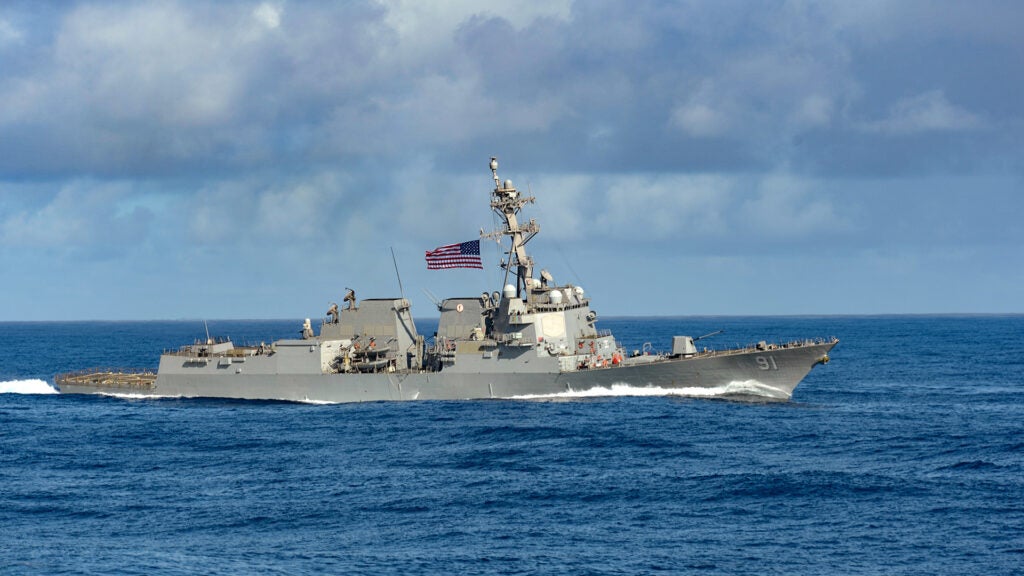Aegis Combat System Performs Simulated Interception Of Hypersonic Threat In New Test
The Missile Defense Agency and the U.S. Navy successfully demonstrated a simulated interception of a hypersonic threat by the Aegis Combat System, advancing the shipborne combat system’s ability to counter hypersonic weapons.
The simulated interception took place during Flight Test Other-40 (FTX-40), or Stellar Banshee, on March 24, 2025. During the test, conducted off the coast of the Pacific Missile Range Facility, Kauai, Hawaii, Arleigh Burke-class destroyer USS Pinckney (DDG 91) demonstrated the ability to detect, track and perform a simulated engagement of an advanced maneuvering hypersonic target using the Sea Based Terminal (SBT) Increment 3 capability embedded in the latest Aegis software baseline. Aegis system developer Lockheed Martin says the test was the third test of SBT Increment 3 and the larger Capability Package 24 / Ballistic Missile Defense 5.1.5 system it is part of.
The tracking exercise included firing a simulated Standard Missile (SM)-6 upgraded missile at the target, an air-launched Medium Range Ballistic Missile (MRBM) with a Hypersonic Target Vehicle (HTV) – 1 “front end” engineered to allow testing and defeat of a variety of hypersonic threats. FTX-40 also provided a data collection opportunity for the Hypersonic and Ballistic Tracking Space Sensor (HBTSS) demonstration satellite.
“Our ability to defeat maneuvering, hypersonic missiles is critical if we are to defend our homeland and our forces against an increasingly dangerous threat,” said MDA Director Lt. Gen. Heath Collins. “The Aegis Weapon System will play a vital role in the next-generation integrated air and missile defense system, and today’s test demonstrated key achievements as we continue to partner with the Navy in advancing our Nation’s counter-hypersonic capabilities.”

According to the MDA, the test was another successful example of the integration of space capabilities passing data that was processed through fire control and then provided to the ship for their simulated Aegis engagement of the target. “Data analysis from this test could help inform efforts to advance the Nation’s counter-hypersonic and missile defense capabilities”.
“Our Aegis Combat System successfully defended against a simulated hypersonic threat,” said Chandra Marshall, vice president of Multi-Domain Combat Solutions at Lockheed Martin. “Aegis Baseline 9’s hypersonic defense advantage against a MRBM target brings incredible capability that allows our warfighter to see the unseen, sooner, ensuring our sailors get in front of threats quickly.”
FTX-40 served as a key risk reduction flight for the new MDA-developed test target and a data collection opportunity for the Aegis baseline against a hypersonic representative target. This exercise is a building block for a live intercept of the MRBM HTV-1 target using the upgraded SM-6. That planned test is known as Flight Test Aegis Weapon System-43 (FTM-43).
FTX-40 builds on the success of FTM-32, an SBT Increment 3 flight test experiment conducted in February 2024. That test demonstrated the capability of an Arleigh Burke-class destroyer to detect, track, engage and intercept an MRBM target in the terminal phase of flight with an SM-6.

